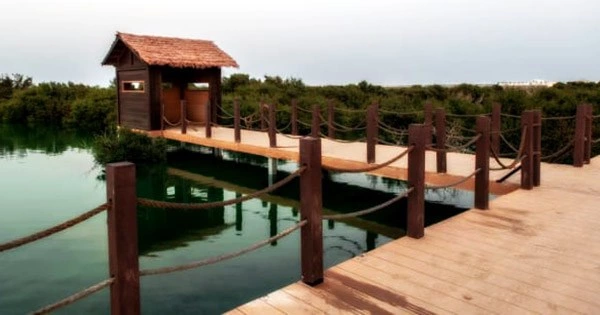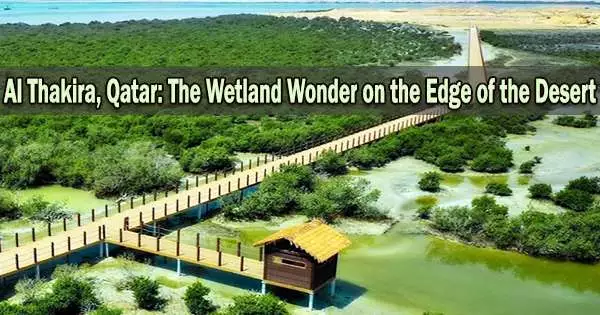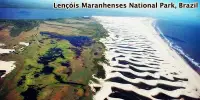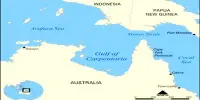A significant area of lush flora and winding canals may be found on the northern edge of the enormous Qatari desert, where rocky and beige flatlands were previously present. Numerous crabs dart in and out of protruding tunnels as pencil-like roots jut out of the muddy soil along the tidal estuary to offer oxygen to the dense plants.
Mangrove reserves in Al Thakira are among the Gulf nation’s most revered natural landmarks and a top vacation spot for both visitors and city dwellers seeking a green escape from the city.
Avicennia Marina, often known as the gray or white mangrove tree that has evolved into the dominating species in the area, resides in these protected woodlands.
The mangrove thickets, which are situated where Qatari land and water meet, serve as a crucial nursery habitat for a variety of coastal and offshore fish and crustaceans as well as a refuge for flamingos, herons, and other seasonal bird species.
“Mangroves are one of the most important ecosystems in this region,” Mehsin Alyafei, a marine environment professor at Qatar University and a prominent environmentalist, tells CNN.
He explains that mangroves function as a natural defense system against rising sea levels and coastal erosion, support biodiversity and help maintain high fishing stock levels by nurturing marine life.
“We just found more than 30 fish species in this mangrove,” Alyafei says. “There are several types of crabs, more than one species of shrimp, squid everything is coming to feed in this area.”
Go kayaking
The mangroves area is easily reachable by car from the bustling capital of Doha, which is 60 kilometers away and just north of the city of Al Khor. However, keep in mind that the trip necessitates a few kilometers of off-road driving.
Once there, the best way to explore the lush scenery (when there is a high tide) is to go kayaking or stand-up paddling.
There are several tour operators and travel companies to choose from and book in advance.
They all provide instructors, equipment and life jackets at a typical cost of QR240 ($65) per tour, with children between the ages of five and 11 charged half the price.
Purple Island
Another favorite option is to visit the nearby mangroves of Jazirat Bin Ghannam, popularly known as Purple Island.

Purple Island got its name from the red-purple dye made centuries ago from the shells of a local mollusk. Purple Island was historically a point of passage that was also utilized by pearl divers and fishermen as early as 2,000 BCE.
The sea snail Thais savignyi’s roughly three million individual crushed shells have been discovered, together with massive pottery vats that were probably used to macerate the crushed molluscs, according to Qatar Museums.
“You can still find many shells of these snails on the island,” Meraj M. Qureish of 365 Adventures, one of the companies offering both morning and afternoon trips to the mangroves area, tells CNN. “Another reason for the name of the island comes from the many purple flowers, which blossom every spring.”
This family-friendly location is perfect for peaceful strolls during low tide, sea life observation, and bird watching (during the Qatari winter) because it has a long, wooden walkway connecting the island with a beach and many tiny hills with limestone cliffs. There are no facilities on the island, so you’ll need to bring your own supplies. It is also reachable by car.
Storing carbon
The region has been the focus of numerous volunteer clean-up efforts over the years with the goals of removing solid waste like plastic and glass and spreading awareness about the importance of the mangrove ecosystems, particularly in a region where the extremely harsh desert conditions limit vegetation growth.
Scientists have long emphasized the biodiversity advantages of mangroves, such as their capacity to act as filtration systems to improve water quality by absorbing pollutants and their significant contribution to the fight against climate change due to their high rates of carbon dioxide sequestration.
“Per unit area, mangroves store carbon three to four times higher than any terrestrial ecosystem,” Daniel Murdiyarso, principal scientist at the Center for International Forestry Research (CIFOR), tells CNN. “Therefore, keeping mangroves intact and restoring degraded ones are key for climate-change mitigation.”
Mangroves ‘deserve protection’
According to UNESCO, mangroves are found in more than 120 tropical and sub-tropical nations and cover a surface area of less than 15 million hectares, or roughly the same size as Greece. The committee issues a warning because the rate of extinction of these ecosystems is three to five times greater than the global rate of forest loss.
According to the United Nations organization, between 1980 and 2005, several countries lost more than 40% of their mangroves, frequently as a result of coastal expansion, changing land use, and extensive commercial aquaculture.
Mangroves have also come under severe pressure in Qatar, where Al Thakira is currently the last such ecosystem of note.
“We’ve lost most of the coral reef in the region, we’ve lost most of the seagrass; I hope we can protect the remaining mangroves,” Alyafei says, “hailing the country’s conservation efforts, including replanting works, to protect its ecosystems and with that, its future generations.”
Murdiyarso echoed the call.
“Tiny strips of Qatar’s mangroves (…) mean a lot in the context of vast desert of Qatar,” he says. “They deserve protection, especially from city expansion. Look at the water birds; they won’t come if mangroves are removed, as the ecosystem services will be destroyed.”
















